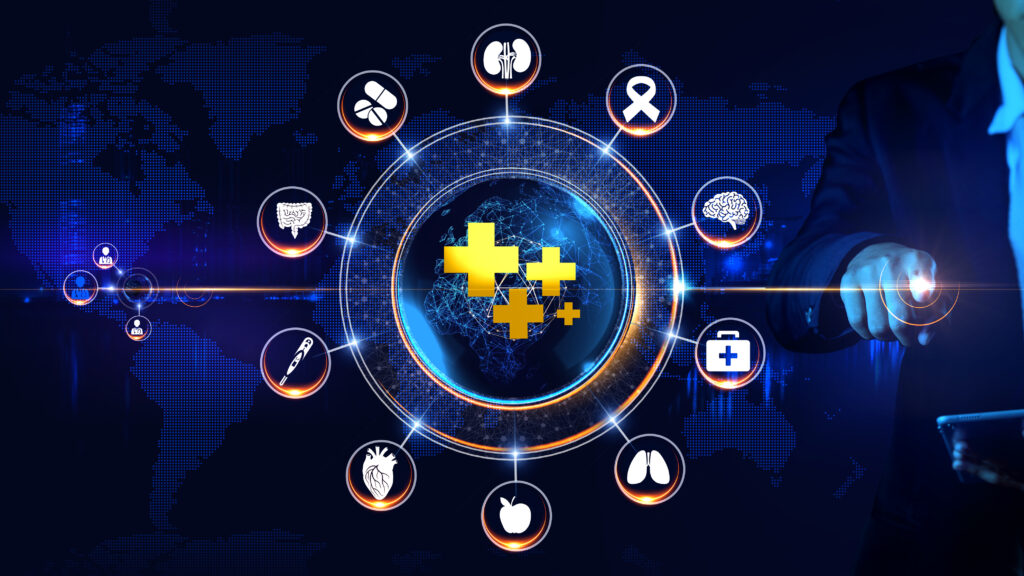Digital transformation in life sciences is becoming a business imperative for biopharmaceutical organizations. Unfortunately, despite leadership commitment, only 20% have been able to successfully execute a digital transformation, which is below the 35% average seen in other industries. This lack of success appears to be due to an incremental approach that has resulted in 88% of digitalization efforts happening within silos, not company-wide.
The good news is that there are solutions life sciences organizations can utilize to digitize their operations and become more data-driven. This guide will explore the options available and how to implement a digital transformation strategy within your organization.
What is Digital Transformation?

Digital transformation is not just a buzzword or a trend; it is an integral part of modern business. It has completely changed how we do business today; however, it requires knowledge of both existing technology trends and emerging ones for a company’s initiative to succeed in the long term.
What Is the Difference Between Digitization, Digitalization, and Digital Transformation in Life Sciences?
The terms digitalization, digitization, and digital transformation are often used interchangeably. However, there is a subtle difference between them – the scope of change they bring.
Digital transformation is the overarching shift where businesses reimagine their model to capitalize on the new opportunities that come with having access to digital data. Digitization refers to the large-scale transformation of current analog data into a digital format, enabling easier access and distribution across networks. Digitalization involves a paradigm shift in processes supported through software tools rather than manual labor.
In short, digitization starts it off. Digitalization helps make sense of it all. And digital transformation completely changes the game.
Digital Transformation in Life Sciences and Biopharma Organizations
In recent years, biopharma companies have increasingly implemented various new technologies in their day-to-day operations to improve efficiency and profitability, with the most common ones being the cloud (49%), AI (38%), data lakes (33%), and wearables (33%). Technologies such as quantum computing and digital twins – albeit still in their infancy – are also being explored by many organizations.
- Cloud computing: The cloud has revolutionized how companies operate, providing unprecedented scalability and agility that can radically reduce costs, dramatically improve the speed of data discovery and insight gathering, and securely store, collate, and share data across vast geographical distances.
- AI: Biopharma investments in AI have skyrocketed over recent years, with the breadth of available AI applications far surpassing those of even a few years ago. The current landscape has enabled top companies through R&D spending to seamlessly transition their pivotal trials into digital environments, allowing them to keep these on track without compromising anticipated launch timings.
- Wearables and AR/VR: Wearables are quickly gaining acceptance in the medical field, with applications ranging from clinical trials to everyday life. In clinical trials, wearables enable data capture of a range of metrics such as blood sugar levels and oxygen saturation. This data can then be remotely transmitted to on-site staff to monitor and adjust equipment settings.
Trends of Digital Transformation in Life Sciences
As technology advances, so does the potential for improving healthcare. With innovations such as drug impact monitoring, medical prescription agents, smart pharma hubs, and bioprinting, it is now possible to customize drugs and provide personalized treatments for each patient.
With advancements in drug dose adjustment and health data clearance through decentralized blockchain ecosystems, patients can be assured that their medical history is protected while also receiving optimized treatments tailored to their specific needs.
And thanks to healthcare tree systems and digital transformation in life sciences, a comprehensive report detailing all treatments throughout a patient’s lifetime is possible.

How Can Life Sciences Benefit From Digital Transformation?

Digital transformation in life sciences has the potential to revolutionize healthcare and biomedical research. Enhanced computational capabilities and data-driven analytics make countless advancements possible.
Increased Effectiveness and Efficiency
Digitizing and rationalizing business processes is one of the most effective ways to drive efficiency and cost savings while fostering an organizational culture that promotes creative thinking and encourages continual development. A modern working environment allows for greater collaboration amongst staff and improved patient and employee satisfaction.
Intelligent Automation
With the help of process automation, the pharmaceutical and medical device industries can look forward to the faster and more efficient delivery of lifesaving medicines and devices across the globe. In addition to speeding up the process of regulatory documentation, patient monitoring, and participant recruiting, digital transformation in life sciences and intelligent automation also gives us access to predictive trend analysis that can anticipate future outcomes and demand.
Digital Twin
The potential of digital twin technology, which creates a virtual replica of physical processes, instruments, and structures, in the life sciences sector is remarkable. Not only does digital transformation in life sciences enable more accurate and personalized treatments for patients, but it also optimizes drug development processes. With digital twins, life sciences professionals can simulate and study patient conditions on a much higher level. All these features enable faster results and better outcomes while reducing costs in the long run.
Digital Ecosystem
By providing an all-in-one resource for drug treatments, diagnosis, and preclinical predictions, a sustainable digital ecosystem can offer precise diagnoses for early-stage patients, detailed information surrounding treatments and drugs available to those in need, and better quality of life overall.
How to Start Your Digital Transformation in Life Sciences Journey?

It is not uncommon for organizations to find themselves in a digital quandary, struggling to keep up with the ever-evolving landscape of R&D data and process management. To embark on a successful digital transformation in life sciences journey, organizations need to evaluate their capabilities and develop digital strategies that incorporate their goals and objectives.
Assess Your Digital Maturity
It is essential to assess existing systems and processes. Doing so requires a thorough investigation into current databases and process management practices, asking questions like:
- Are you tracking data and samples across multiple spreadsheets or in paper notebooks?
- Do you lack flexibility or struggle to maintain custom in-house solutions?
- Do your existing electronic lab notebooks and digital solutions integrate across systems?
Assessing your digital maturity involves taking stock of the current state of affairs and making strategic adjustments to bring your organization up to speed with the latest industry standards.
Define Value Metrics
Taking the time to define value metrics and measure the expected or actual business value from digital solutions is crucial. Understanding the current data and process bottlenecks you face and turning them into measurable value metrics will help set you up for success in your digital transformation journey.
And, of course, partnering with a vendor that tracks value at this level across its customers helps benchmark the expected efficiency gains your organization can expect from the new solution. With this information, you will be well-positioned to make the best decision for your organization and ensure it achieves the expected ROI.
Develop a Portfolio of Digital Innovation
In order to support a successful digital transformation in life sciences operational processes, there needs to be a unified vision of the digital capabilities required throughout the entire value stream. This requires an in-depth fit/gap assessment to determine which existing capabilities can meet the goals and which new investments are necessary.
Determine the Approach
Life sciences organizations can then partner, buy, or build to boost their digital capabilities:
- Partner: Partnership arrangements allow businesses to channel their resources and energy into achieving their primary business goals while simultaneously accelerating the process of digital transformation. According to a survey, nearly half of all companies reported their partnerships exceeded original expectations.
- Acquire: Given the increasing number of digital start-ups emerging in the life sciences sector, M&A has become an attractive and accessible choice for investors seeking to make sound investments.
- Build in-house: For companies that are looking for a custom solution tailored to their specific needs and requirements, one of the most popular options is to build the digital solution in-house. However, this approach requires that the company has access to the right talent, skills, and capabilities needed to develop such a solution.
Design an Operating Model
Rather than relying on legacy budgeting models, moving towards a more iterative project-based financing structure could allow for adequate funding to be allocated to digital innovation initiatives.
This model would involve continually assessing the resources available and adjusting resource allocation accordingly depending on the success of previous projects. It also involves regularly evaluating key performance indicators for each project to ensure the timely attainment of desired objectives.
An effective operating model should also include a well-defined governance framework that outlines roles and responsibilities across different stakeholders to ensure efficiency and accountability throughout the innovation process.
Fire Up Quick Wins
In reality, the first year of a successful digital transformation in life sciences typically produces 35% of the total value accrued over the lifespan of the process. Achieving this requires moving quickly and making swift decisions backed by evidence. Staying agile and responsive to changes in both internal and external environments is also essential, as this ensures that all stakeholders remain engaged with the transformation and buy into its goals.
What Are the Challenges of Digital Transformation in Life Sciences?

The process of digital transformation in life sciences is notoriously prone to stalling, which is due to three main issues: budget (58%), talent (57%), and operating model (52%) concerns. For those who have already begun their digital transformation, the difficulty of measuring the business value delivered to their company is noteworthy; 60% of early adopters have yet to measure their progress and values derived from such projects accurately.
When it comes to digital transformation in life sciences and other metrics-based initiatives, what often stands in the way are incomplete or poor data quality, a lack of a data analytics function that can provide a comprehensive view of patients, and an absence of any data monetization strategy.
Other roadblocks include regulatory constraints, a disregard for people-centric and business-focused perspectives throughout digital projects, sacrificing control in favor of convenience during development cycles, and scope creep that can quickly become toxic.
How Can You Excel With a Technology Partner?
Working with a technology partner like KMS can help your digital transformation in life sciences industry improve digital transformation by allowing you to:
- Simplify complex processes and workflows for a clinical trial.
- Design and deploy research studies that comply with industry standards in days, not months.
- Manage collaborative research across multiple clinical trials and sites.
- Capture and manage patient, clinician, EMR/EHR, and device data in one centralized location.
- Comply with 21 CFR Part 11, GCP, GDPR, HIPAA, and other regulations.
- Recruit trial participants more effectively and improve patient visit satisfaction.
- Remove manual processes by moving to paperless clinical trial management.
- Automate billing and cost management.
- Develop reliable RPM and ePRo solutions.
- Improve productivity through life science software development.
- Get more value from life sciences software.
Need help with capitalizing on the new process of digital transformation in life sciences? Choose KMS Healthcare as your life sciences software partner. A team of experienced developers can revolutionize research, testing, integration, and delivery. Contact KMS to learn more.
